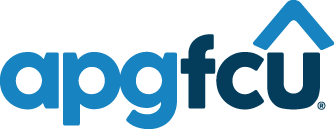In business, time is money. However, dealing with money can require more time. Running to your financial institution to deposit every customer check can eat up valuable time you could be spending on business operations. Electronic payments are the way of the future, but they must be secure to put customer concerns at ease.
Let’s take a look at a few ways you can streamline payment processes to save time, safeguard customer data and get back to business.
Remote Check Deposits
Remote Check Deposits (RDC) allow you to easily and quickly deposit customer checks from your location, eliminating the need to physically go to your financial institution. Many remote deposit services seamlessly connect to your financial account, allowing you to simply scan, transmit and access funds at your convenience. Utilizing RDC can also help you simplify physical record keeping by automatically updating your accounts receivable and storing images of previously deposited checks.
Eliminating the need to travel to and from your financial institution with customer data in-hand improves data security as well. You no longer need to worry about losing a check on the way and having it fall into the wrong hands. Additionally, RDC can help reduce the chance of multiple check deposits by detecting duplicate entries, giving you further peace of mind.
Automated Clearing House Payment Processing
Automated Clearing House (ACH) transactions provide a quick, electronic and secure payment process for small businesses. Like RDCs, this eliminates the need to transport paper checks to a financial institution. ACH payments are intended to securely move funds from one account to another; for example, from a customer’s account to yours. Funds are available to the receiver within a few business days without the use of a physical check or card.
ACH transactions can prove beneficial to small businesses with recurring payments or that want to offer customers an efficient way to pay for products or services. Customers can transfer funds via ACH credit or ACH debit. An ACH credit is initiated by the sender to “push” the funds from their account into another account. This is often free and typically requires the payer’s account information to complete. Someone may use an ACH credit to pay a one-time bill. An ACH debit transaction occurs when the payer gives the receiver permission to automatically “pull” the funds from their financial account upon a due date. Someone may set up a recurring ACH debit for their monthly mortgage payment. This is typically a recurring transaction that can help businesses avoid late fees and failed payments. However, there are several types of ACH debit transactions, some recurring and others one-off only.1
ACH processing saves businesses time by easily tracking expenses while protecting their bottom line and cash flow. Best of all, ACH transactions are free to customers and are less costly to businesses than traditional credit card processors, saving you money on processing fees while keeping your customers happy.
As a business owner, you know customers enjoy a no-hassle way to shop. ACH payments are user-friendly and only require a one-time entry of your customer’s account and routing number. Customers can pay invoices at your specified interval, which are automatically deducted from their account. You also will likely no longer need to update their information as frequently as with a credit or debit card, as account and routing numbers rarely change. This will save you time and money on manual tasks, making automated payments the new normal.
Visit our website or give us a call at 410-225-2555 to learn more about how to advance your business.
1https://gocardless.com/en-us/guides/ach/ach-credit-vs-debit/
